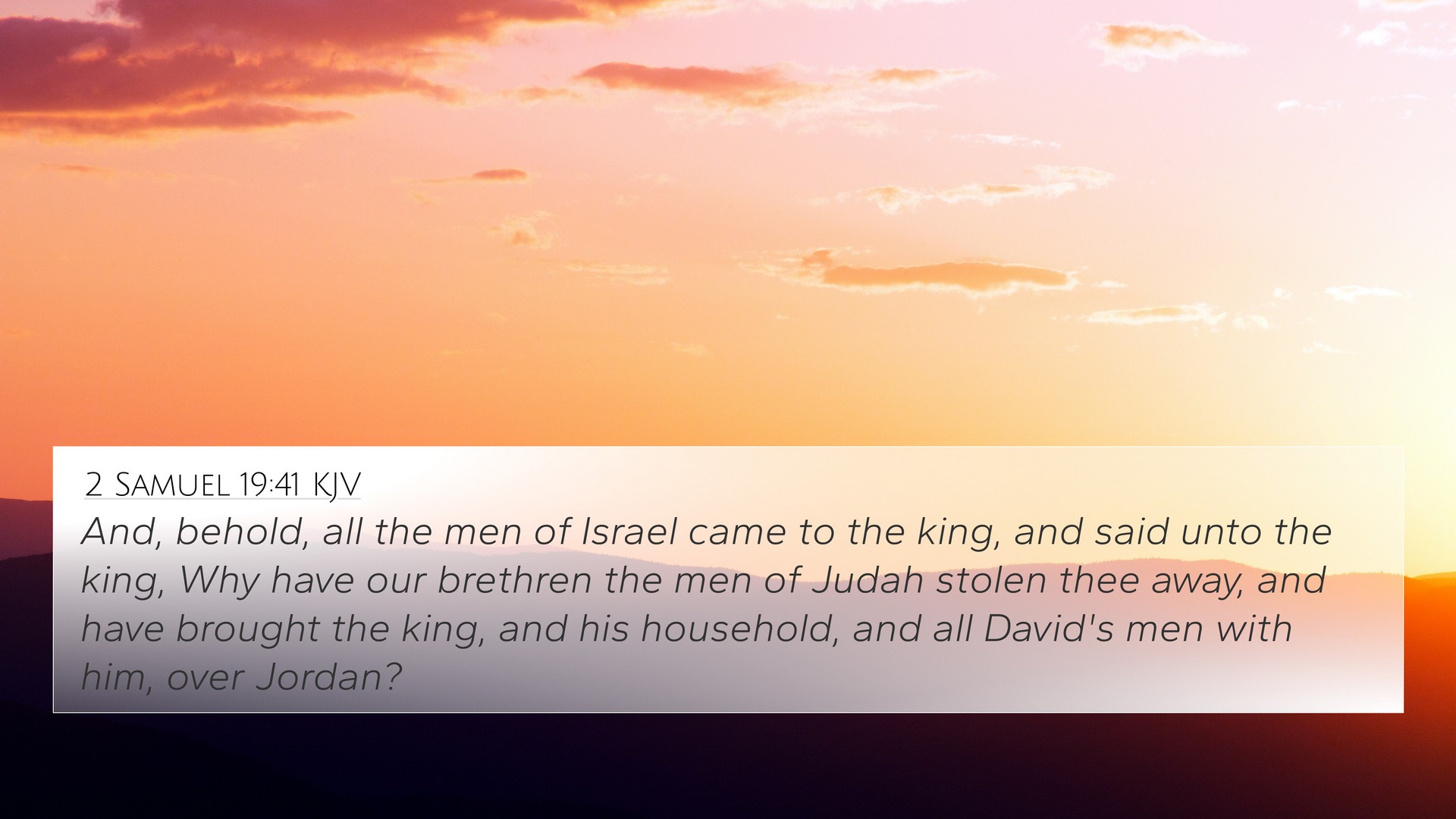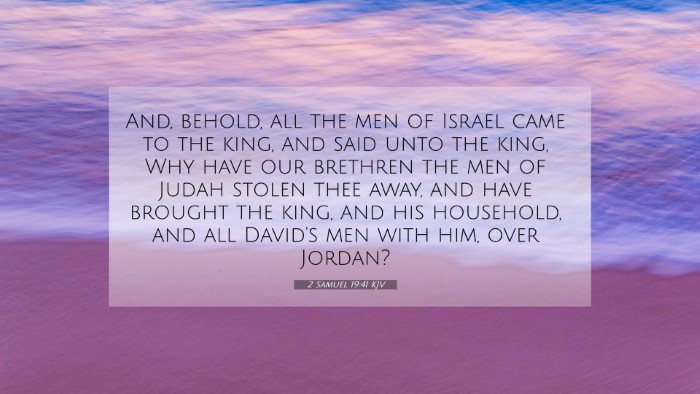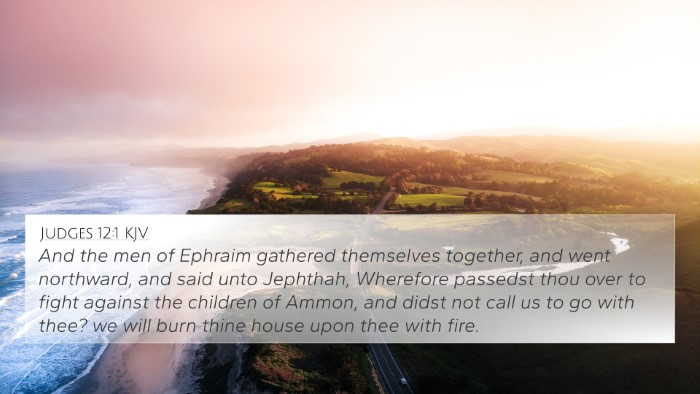Understanding 2 Samuel 19:41
Verse: "And, behold, all the men of Israel came to the king, and said unto the king, Why have our brethren the men of Judah stolen thee away, and have brought the king, and his household, over Jordan, and all David's men with him?"
Context and Background
In this verse, we see a moment of tension between the tribes of Israel and Judah following the restoration of David as king after Absalom’s rebellion. The men of Israel express dissatisfaction at what they perceive as favoritism towards Judah, highlighting the complexities within the tribal relationships of Israel.
Commentary Insights
Matthew Henry: Henry emphasizes the division that can arise in communities, particularly in Israel, where loyalties are often divided among tribes. He interprets this verse as a reflection of human jealousy and rivalry which can often lead to discord. David's acceptance back to the throne after Absalom’s defeat serves as a reminder that God's grace can restore leaders despite past failures.
Albert Barnes: Barnes points out that the expressions of the men of Israel reveal their feeling of neglect and betrayal. He suggests that their grievances stem from historical resentment and rivalry with Judah. This can be seen as an opportunity for David to unify the tribes and establish peace, emphasizing the importance of leadership that acknowledges and reconciles differences.
Adam Clarke: Clarke delves into the cultural implications of this rivalry, explaining how the tribes operated closely to their defined territories. He notes that the jealousy shown here could be traced back to previous allocations of resources and recognition within the leadership of Israel. Clarke implies that such conflicts require wise mediation to ensure cohesion under David's rule.
Bible Verse Cross-References
- 2 Samuel 2:4: David was made king of Judah, signaling the division that would later manifest.
- 1 Kings 12:16: A later example of tribal discontent, demonstrating ongoing divisions among the tribes of Israel.
- Genesis 49:10: The prophecy concerning the scepter and the conflict surrounding leadership in Israel.
- Psalm 60:7: Reference to the tribes and their conflicts celebrating the unity under God.
- Amos 5:15: Calls for justice and unity among the tribes, resonating with the context of divided loyalties.
- Matthew 5:9: Blessed are the peacemakers, offering insights into David's potential role in healing divisions.
- Romans 12:18: Applies to Christians today about living peaceably with all, a value David needed to embody.
- Philippians 2:1-3: Encouragement toward unity and humility that parallels the call for reconciliation among tribes.
- 1 Corinthians 1:10: Paul addresses divisions in the church, drawing parallels to the issues faced by David.
- Proverbs 16:28: A reminder that strife stems from pride, relevant to the grievances among the tribes.
Thematic Bible Verse Connections
This verse brings forth numerous themes found throughout scripture, such as:
- Conflict and Division: Just as evidenced in subsequent events after Absalom’s overthrow, and in later accounts during King Solomon’s reign.
- Leadership and Responsibility: The responsibility of a leader to serve all constituents, not just one faction, is echoed through biblical texts.
- Reconciliation: The call to unity among believers, seen in the New Testament, stemming from a need for resolution among divided parties.
Conclusion
The dynamics expressed in 2 Samuel 19:41 provide a vital study in the complexities of leadership, tribal affiliations, and the need for reconciliation. As believers today, we can learn from these verses about the importance of addressing grievances, promoting unity, and the divine call to effective leadership in the face of discord. The stories of the Old Testament reveal timeless truths applicable to modern contexts, encouraging us to seek peace and understanding in our relationships.
Tools for Bible Cross-Referencing
To delve deeper into such thematic connections, utilizing tools for Bible cross-referencing can enhance study:
- Utilization of a Bible concordance to trace keywords and their occurrences across scriptures.
- Engaging with a Bible cross-reference guide that connects related verses and themes.
- Exploring cross-reference Bible study methods to draw parallels between Old and New Testament themes.
- Accessing Bible reference resources for a comprehensive approach to scripture study.







